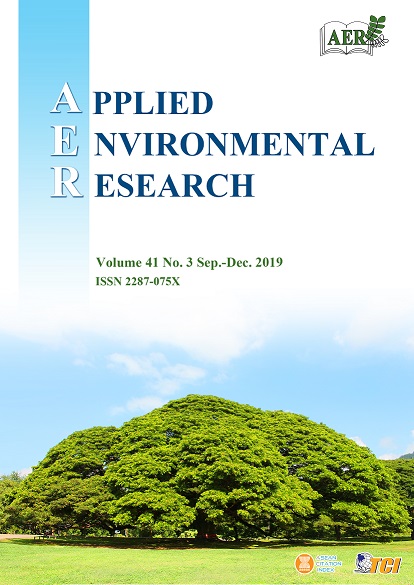Analysis of Environmental Performances of Ferritization Method for the Treatment of Copper-ammonia Wastewater under the Optimized Condition via RSM
Main Article Content
Abstract
Copper-ammonia wastewater is one important form of hazardous waste that contaminated in water resources by industrial processes. Moreover, conventional hydroxide precipitation method to remove this copper complex form produces a lot of unstable precipitates that still need further management. With the high potential of stable precipitates, ferritization method was applied in this study. The objective of this study was to investigate the optimum condition of the ferritization method by using Response Surface Methodology (RSM). After the optimum condition was operated, the environmental performances between the ferritization and conventional hydroxide precipitation methods were compared by using Life Cycle Assessment (LCA) methodology. From the experiment, it was found that the model obtained from RSM was accurate and reliable with R2= 98.37, Adj-R2= 96.91, Pred-R2= 91.40, S=1.45 and PRESS= 110.859. The optimum condition of the pH, reaction temperature, and reaction time was found to be 10.8, 69 ºC, and 115 min, respectively. In addition, the actual experiment showed that the efficiency of copper-ammonia removal was found to be 98.41 ± 3.18 %. In the case of environmental performances, it was found that the conventional method was more adversely affected human health, ecosystem quality, climate change, and resource consumption than ferritization method. In conclusion, ferritization method demonstrated better performance in both the efficiency of copper-ammonia removal and environmental performance perspective.
Article Details

This work is licensed under a Creative Commons Attribution-NonCommercial 4.0 International License.
Published articles are under the copyright of the Applied Environmental Research effective when the article is accepted for publication thus granting Applied Environmental Research all rights for the work so that both parties may be protected from the consequences of unauthorized use. Partially or totally publication of an article elsewhere is possible only after the consent from the editors.

